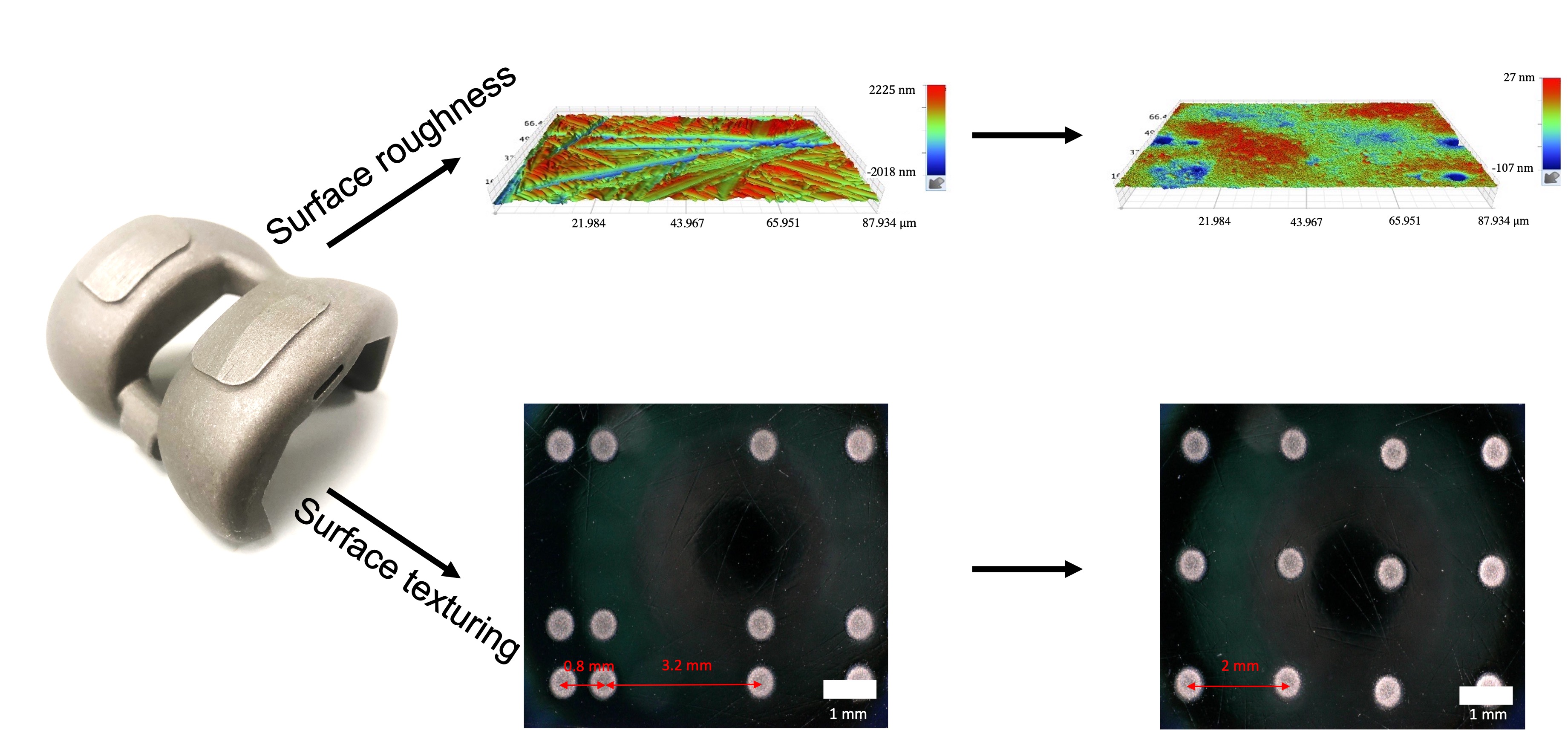In general, a good design of the optimal surface roughness only reduces asperity interactions between bearing surfaces. However, the thickness of the lubricant film cannot increase greatly by only obtaining the optimal surface roughness. Furthermore, considering the long-term
in-vivo service time of implanted joints, this issue is more profound for the orthopedic industry [
30]. Surface texturing technology was widely discussed in the literature to affect the tribological performance of different applications [
15,
25,
31–
33]. As for bioimplants, Choudhury et al. [
34] confirmed that texturing patterns improve the lubricating effect by forming a thicker film in the vicinity of micro dimples. Much effort has been devoted to measuring the friction and wear directly after applying texturing technology. Ito et al. [
35] found that fabricating micro dimples (500 μm diameter, 1200 μm pitch distance, and 100 μm depth) on the bearing surface of CoCrMo reduced the wear loss of UHMWPE by 69%. An improvement in the tribological performance of dimple-textured bioimplants was also reported in Refs. [
13,
36,
37]. Shen et al. [
25] comprehensively studied the role of five pattern parameters, namely, pattern shape, size, area density, depth, and distribution mode. They found that the triangle pattern with 200 μm side length, 10% area density, 8–10 μm depth, and square-array distribution mode can provide the best tribological performance. Although most scholars agree that surface texturing can increase the tribological performance of polymer-based bioimplants, the working mechanism behind this phenomenon remains missing. One of our previously published review papers [
15] revealed four possible working mechanisms: (1) trapping hard particles, (2) increasing wettability, (3) providing hydrodynamic pressure, and (4) reserving lubricants. The first two working mechanisms are widely accepted in the state-of-art because trapping hard particles can reduce the occurrence of three-body abrasive wear [
38], whereas increased wettability can help form a more stable lubricant film [
39]. However, scholars have different views regarding how surface texturing can help promote load-carrying capacity. Many researchers claimed that hydrodynamic pressure induced by micro patterns should be the main source to form thicker lubricant film [
40–
42], whereas some scholars opposed this idea, claiming that low viscosity and slow velocity working condition made hydrodynamic pressure played a minor role in the tribological performance of textured bioimplants [
43,
44]. Although scholars have different views regarding which pattern parameter can provide the best tribological performance or which working mechanism plays the main role, one common feature of texturing investigation is in the state-of-art: The pitch distance between any two adjacent patterns is constant in one bearing surface [
37,
45,
46]. In another word, micro patterns are evenly distributed on the contact surface. However, no study confirmed that the tribological performance of evenly distributed patterns is better than that of unevenly distributed patterns. Furthermore, the scanning electron microscope (SEM) image of the natural articular surface shows that micro dimples are unevenly distributed on the bearing area [
47]. Inspired by this natural feature, Melentiev and Fang [
48] used sandblasting technology to modify the bearing surface of CoCrMo, making it similar to that of natural joints, but they did not conduct any tribological investigation. Hence, knowledge regarding which distribution mode is suitable for bioimplants remains lacking.


















